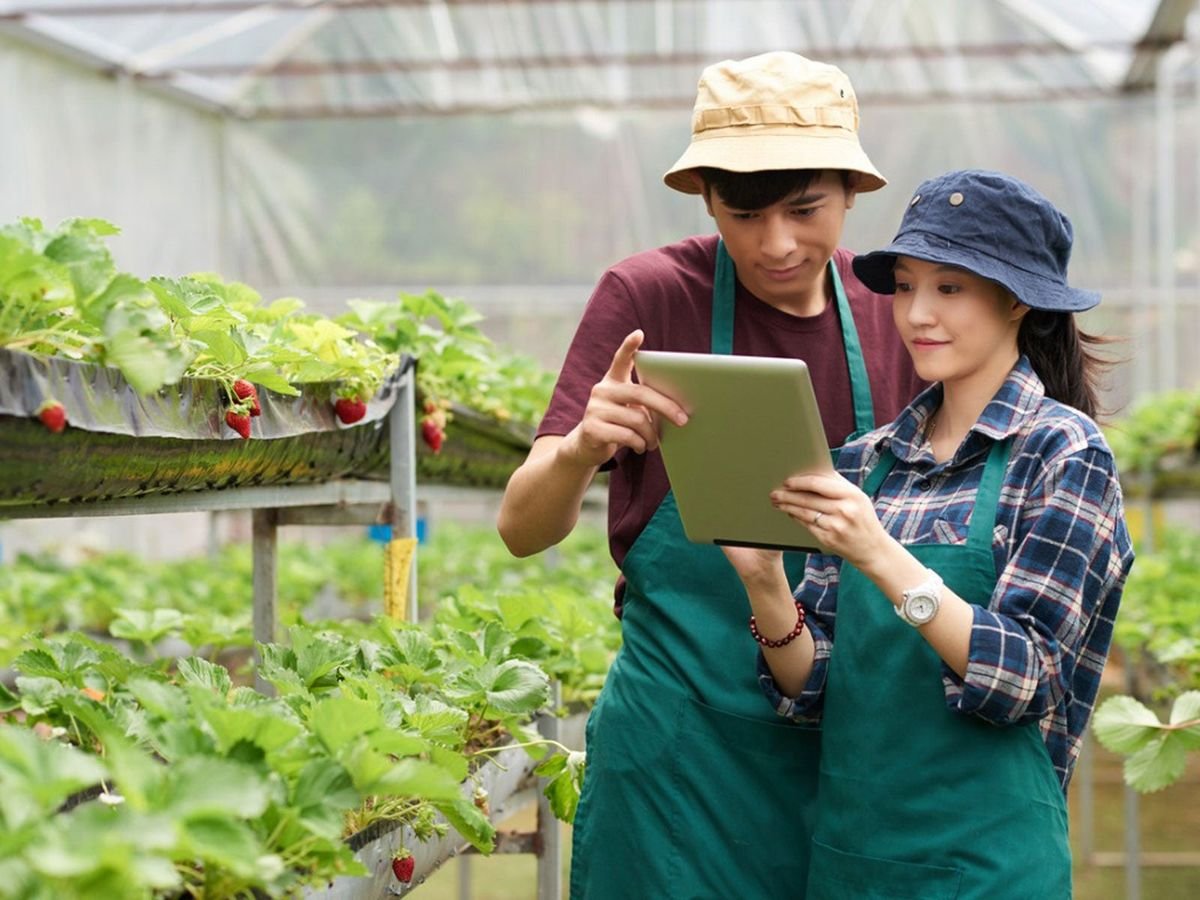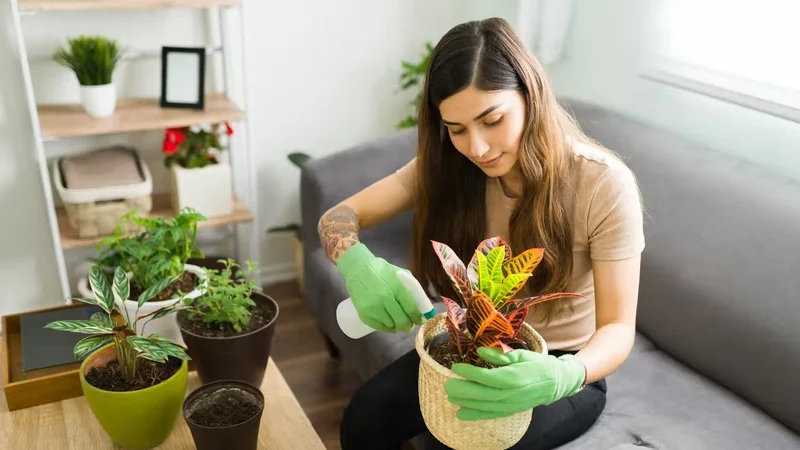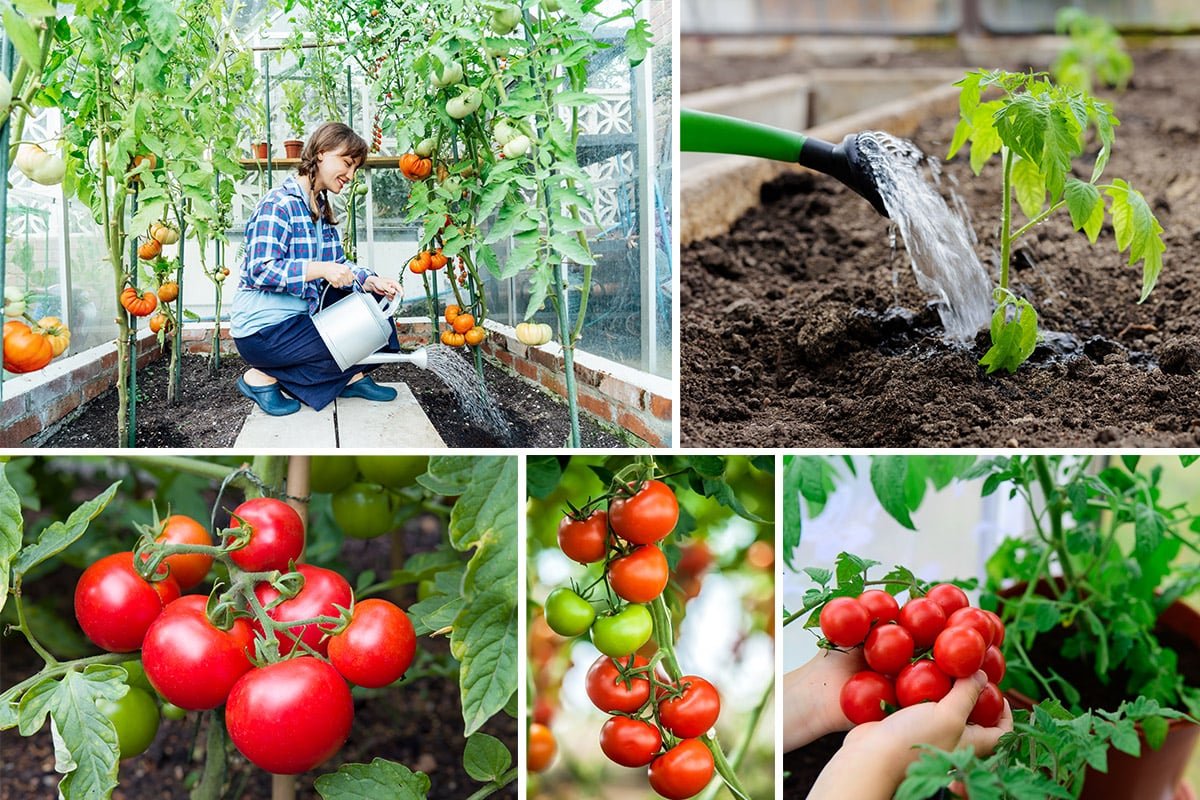
Tomato Plant Issues and Fixes Plant Upkeep Tips for Gardeners Will increase by 5X with the right care
Tomatoes rank among the most satisfying crops for gardeners to cultivate, yet they can prove quite tricky. Tomato plants encounter numerous potential problems, from wilting leaves to poor fruit production, which can stunt their growth and decrease yield. Yet, with proper care and attention, you can overcome these issues and boost your tomato harvest by five times. This in-depth guide will cover the most frequent tomato plant problems, their solutions, and key maintenance tips to help your garden flourish.

1. Blossom End Rot: A Common and Frustrating Problem
The Issue: One of the most disheartening sights for any tomato gardener is discovering black, sunken spots on the bottom of their tomatoes. This condition, known as blossom end rot, is caused by a calcium deficiency in the plant.
The Fix: To prevent blossom end rot, it’s crucial to ensure that your tomato plants have a consistent water supply. Fluctuations in moisture levels can impede the plant’s ability to absorb calcium. To mitigate this, apply a layer of mulch around the base of your plants to help retain soil moisture. Additionally, consider adding a calcium supplement to your soil, such as crushed eggshells, lime, or gypsum. Ensuring a balanced pH level in the soil (ideally around 6.5) also aids in calcium absorption.

2. Tackling Tomato Blight: Prevention and Control
The Issue: Tomato blight, which can be caused by either early blight or late blight, is a serious fungal disease that can quickly devastate your tomato crop. It starts with dark spots on the leaves and can lead to total plant collapse.
The Fix: To combat blight, start by practicing crop rotation—avoid planting tomatoes in the same spot year after year. Good air circulation is key, so space your plants adequately to allow for airflow and avoid overhead watering, which can keep leaves wet and promote fungal growth. If blight does strike, copper-based fungicides can be effective, though they should be used as a last resort. Regularly remove and destroy any affected plant material to prevent the disease from spreading.
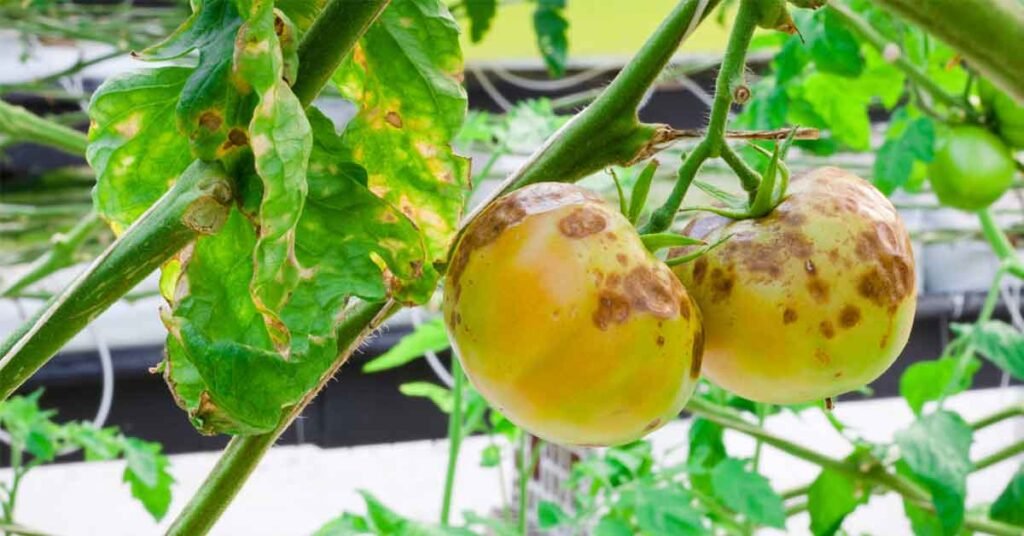
3. Yellowing Leaves: Identifying and Treating Nutrient Deficiency
The Issue: When your tomato plant’s leaves start turning yellow, it’s often a sign of nutrient deficiency, particularly a lack of nitrogen, though it could also indicate other issues like overwatering or disease.
The Fix: Start by conducting a soil test to determine if your soil is lacking in essential nutrients. If nitrogen is low, apply a nitrogen-rich fertilizer according to the product’s instructions. Be careful with watering; tomatoes need consistent moisture, but too much water can lead to root problems, further contributing to yellowing leaves. If the yellowing persists, inspect the plants for signs of pests or diseases that might be causing the issue.

4. Preventing Tomato Cracking: Ensuring Consistent Watering
The Issue: Tomato cracking occurs when the plant receives an irregular supply of water—after a dry spell, a sudden influx of water can cause the fruit to expand too quickly, leading to cracks.
The Fix: The key to preventing cracked tomatoes is maintaining consistent soil moisture. Water your plants regularly, aiming for deep watering sessions that encourage the roots to grow deeper. Mulching is again useful here as it helps retain moisture in the soil, preventing the sharp fluctuations that lead to cracking. If you notice a heavy rain is coming after a dry period, consider harvesting any ripe tomatoes to avoid damage.
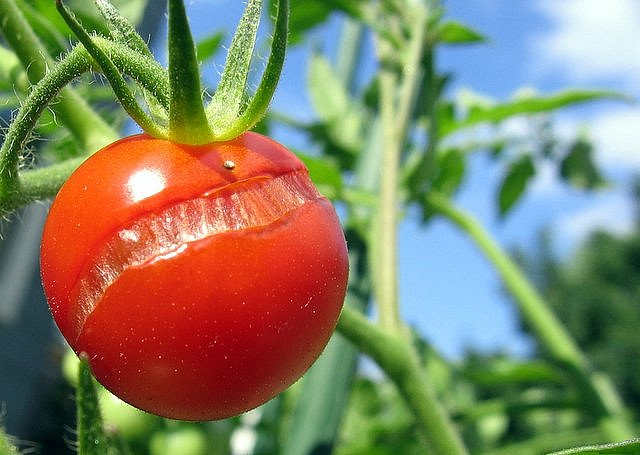
5. Improving Pollination for Higher Yields
The Issue: Poor pollination can result in fewer fruits or misshapen tomatoes, directly impacting your yield.
The Fix: To boost pollination, encourage pollinators such as bees by planting companion flowers like marigolds or lavender near your tomato plants. If you’re growing tomatoes in a greenhouse or indoors, you can assist pollination by gently shaking the plants or using a soft brush to transfer pollen between flowers. In cases where pollinators are scarce, this manual intervention can make a significant difference in fruit production.
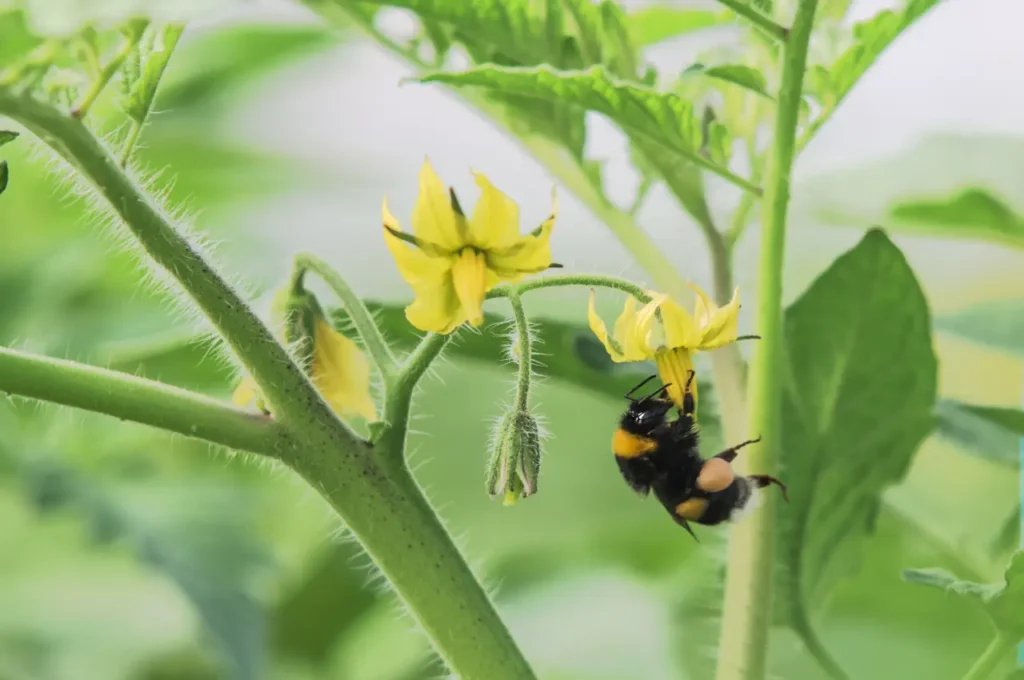
6. Enhancing Soil Health: The Foundation of a Bountiful Harvest
The Issue: Poor soil health can limit nutrient uptake, leading to stunted plant growth and lower yields.
The Fix: Building and maintaining healthy soil is crucial for growing robust tomato plants. Regularly add organic matter such as compost, well-rotted manure, or leaf mold to your soil to improve its structure and fertility. Consider using a soil amendment like fish emulsion or kelp meal to provide a slow-release source of nutrients. Keeping the soil’s pH between 6.0 and 6.8 ensures that nutrients remain available to the plants. Remember, healthy soil leads to healthier plants and significantly higher yields.
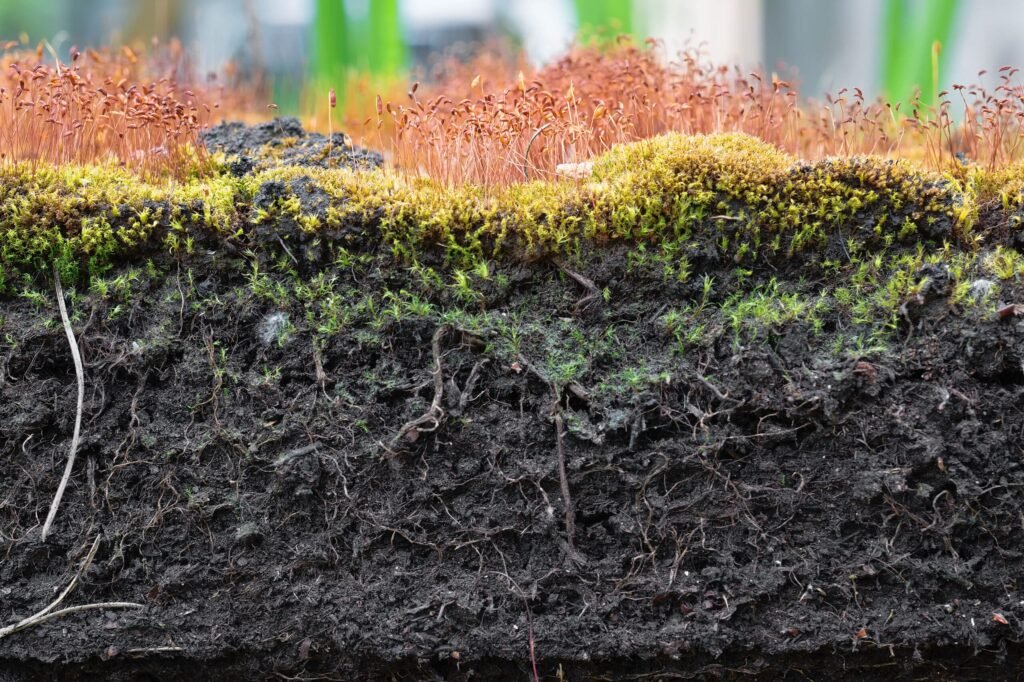
7. Pest Control: Protecting Your Tomatoes from Common Pests
The Issue: Pests like aphids, whiteflies, and tomato hornworms can cause significant damage to your tomato plants, resulting in lower yields.
The Fix: Implementing an integrated pest management (IPM) approach is the best way to keep pest populations under control. Start by introducing natural predators like ladybugs to your garden to combat aphids, or use beneficial nematodes to target soil-dwelling pests. For larger pests such as tomato hornworms, handpicking is effective. Insecticidal soaps and neem oil are good options for controlling pests without harming beneficial insects. Regularly inspect your plants for signs of infestation, and take action early to prevent widespread damage.

8. Pruning for Healthier, More Productive Plants
The Issue: Unpruned tomato plants can become overgrown, leading to poor air circulation, increased risk of disease, and reduced fruit production.
The Fix: Pruning is an essential maintenance task for tomato plants. Focus on removing the suckers—small shoots that develop in the joint between the main stem and the branches. Pruning these suckers helps the plant direct more energy toward fruit production rather than excessive foliage growth. Additionally, remove any lower leaves that are in contact with the soil to reduce the risk of disease. Proper pruning leads to better air circulation, healthier plants, and a significant increase in yield.

9. Supporting Your Tomato Plants: The Importance of Staking and Trellising
The Issue: Unsupported tomato plants can sprawl on the ground, making them more susceptible to disease and pests.
The Fix: Provide your tomato plants with sturdy support to keep them upright and off the ground. Staking, caging, or using a trellis are all effective methods for supporting tomato plants. Not only does this prevent the plants from sprawling, but it also improves air circulation and exposure to sunlight, both of which are critical for healthy growth. Well-supported plants are less prone to disease and can produce more fruit.

10. Maximizing Sunlight Exposure: A Key to Thriving Tomatoes
The Issue: Insufficient sunlight can lead to weak plants and poor fruiting.
The Fix: Tomato plants require at least 6 to 8 hours of direct sunlight each day to thrive. If you’re growing tomatoes in an area with limited sunlight, consider using reflective materials like aluminum foil or white paint to maximize light exposure. Growing tomatoes in containers that can be moved to sunnier spots is another option. Ensuring your plants get enough light is essential for strong growth and abundant fruit production.

The Path to a Bumper Tomato Harvest
By addressing these common tomato plant issues and applying the upkeep tips outlined above, you can significantly boost your tomato yield—potentially increasing it by five times with the right care. From preventing diseases and pests to improving pollination and soil health, every aspect of tomato plant care contributes to a more fruitful harvest. With dedication and attention to detail, your tomato plants will thrive, rewarding you with a bountiful and delicious crop.

